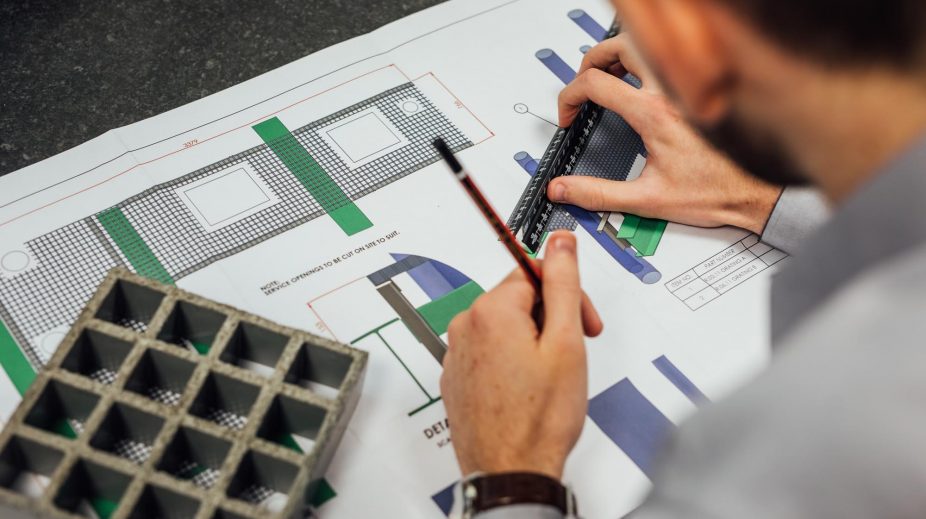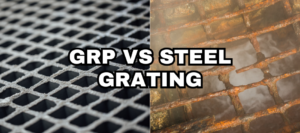A question we are often asked, Is GRP an environmentally sustainable solution? An Information Sheet was compiled by Plastics Europe highlighting and discussing the Environmental benefits of Glass/Fibre Reinforced Plastics as below:
The environmental benefits of GRP composite, in its many applications, are proven. However, questions are often asked about the material itself and the environmental impact of manufacturing and working with the constituent materials.
Issues that affect the industry include; health & safety; the emission of volatile organic compounds (VOCs); energy consumption & toxicity from the manufacturing process; and the recycling of production waste and end-of-life parts. Compliance with strict environmental legislation and codes of practice, combined with the adoption of alternative materials and technologies (such as closed mould processes, natural fibers, and low-styrene resins) largely addressed these environmental issues.
As far as recycling is concerned. The European Composite Recycling Services Company, a European-wide consortium, is actively developing composites recycling initiatives and solutions that meet European Union directives. Solutions include energy recovery through incineration and recycling end-of-life composite parts via collection, shredding, and milling down into fractions. The resulting ‘recyclate’ can be reused as a filler in new GRP formulations and has other industrial uses, as does the ‘grate ash’ residue from incineration.
This Information Sheet compiled by Plastics Europe highlights and discusses the Environmental benefits of Glass/Fibre Reinforced Plastics.
1. Environmental benefits of weight reduction
Products produced from composite GRP materials offer significant environmental benefits as they have characteristically low weight, good mechanical properties, and excellent resistance to corrosion. e.g. composites used in cars can substantially reduce overall weights by as much as 40% compared to steel.
2. Life cycle analysis comparison puts GRP above steel and aluminum
In 2003, the European Alliance for SMC together with BASF undertook a comprehensive eco-efficiency analysis on a composite part (a boot lid for Mercedes), versus the equivalent part in steel and aluminum. The study considered the entire ‘ecological fingerprint’ from the manufacture of the raw material to recycling of finished parts. Economy and ecology were ranked as equally important in this sustainability study. The composite part came out as most favorable overall.
3. Truck producers harness GRP benefits
Commercial vehicle producers were the first group in the automotive sector to fully exploit the benefits of GRP as a structural material for building truck cabs and air deflectors. Every kilogram saved in the weight of a cab means a kilogram increase in payload carrying capacity.
4. Greener engines thanks to composites
When it comes to under the bonnet applications, GRP composites are also an environmentally attractive alternative to metals. For engine oil sumps and valve covers, for example, GRP fulfills all the mechanical strength requirements, e.g. a sump must be able to support the weight of the engine, but also delivers added-value environmental benefits. These include a reduction in noise and harshness levels and improved engine efficiency since the engine warms up faster and reaches operational efficiency sooner. The result is less fuel wasted during cold starting and also during operation, due to the lower weight of the engine.
5. Alternative energy
Wind farms are becoming a prominent feature on land and off-shore throughout the world. Windmills the size of those that we see today with blades of around 60 meters would have been almost impossible to build without GRP. Steel blades of this size would be so heavy they would require hurricane forces winds to move them.
6. Helping to conserve tropical hardwoods with GRP
GRP doors are becoming increasingly popular for buildings and home renovations. They faithfully reproduce the look and solid feel of tropical hardwoods, such as mahogany, without the need for a single ancient tree to be felled. GRP doors also bring added security as they are extremely strong and resistant to break-in. Composite doors are also highly durable, they will not rot, warp or splinter and, what’s more, they never need painting.
You can download the Information sheet here: Environmental Benefits for GRP





